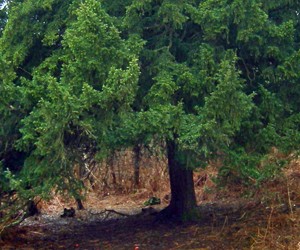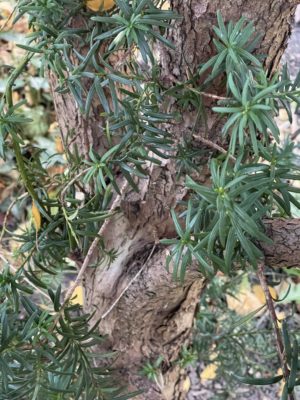Forests in the Fens ?

To see the forests of The Fens, you would need to be a time traveller, as they were ‘lost’ some four thousand years ago. Today, The Fens are a low lying agricultural region that forms part of Norfolk, Lincolnshire and Cambridgeshire. The Fens contain some of the best agricultural land in the U.K., growing potatoes, sugar beet, and wheat. A naturally marshy area, it was drained centuries ago and is now maintained through a complex system of drainage canals, dykes and pumping stations. As a result of the drainage, the level of the land in many places has shrunk. Indeed, in places, the land level is below sea level. There are occasional ‘hills’ or islands, which have remained dry even when the surrounding area has been flooded. The city of Ely and its cathedral was built on such a clay island.

Deeper ploughing (e.g. for potatoes) in this area has over the years exposed ’bog oaks’, large logs between two and eight metres in length. The trunks were sometimes piled up in so-called clearance cairns on the edges of a field, or allowed to dry out and later used for fuel. Recently, ‘oaks’ from a number of farms across the region have been examined by researchers at Cambridge University and many have been identified as the remains of ancient yew trees. The various logs were often well preserved in the peaty soils of the area, and this allowed detailed analysis of the annual rings (dendrochronology). The rings showed that some of the Yews were 400 years old, when they died. Tree ring analysis plus examination of the pollen grains* (found in the peat), suggests that the area had dense yew (and oak) woodlands some 4500 years ago. However, these woods were lost about 4200 years before today, probably due to an abrupt rise in sea level. The trees would have been unable to tolerate the salt water (nor salt spray) when the area around The Wash was inundated. Quite what was responsible for the rise in sea level is not clear, though other significant climatic events in different parts of the world have been recorded at this time.
- the 'wall' of pollen grains [the exine] is made from a chemical [sporopollenin] that is extremely resistant to decay / degradation, so the grains retain their shape / markings for thousands of years; this means that plant species can be identified [palynology].
Comments are closed for this post.

would it be possible to plant salt tolerant trees to replenish the soil and build up resistance to climate change? Italian alder drop leaves that provide nitrogen to the soil – also livestock will graze on the grass and fertilise the ground replenishing the soil as they always used to if we give them the chance?
Helen Willias
26 March, 2024